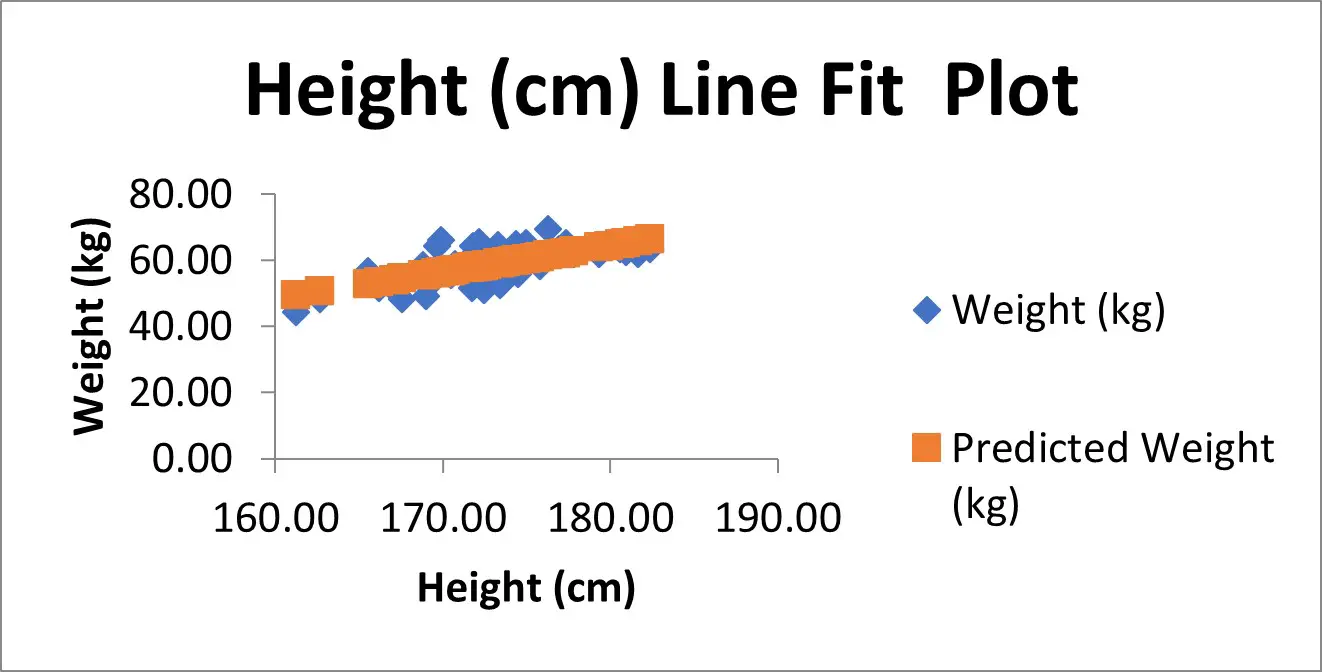
- #Excel linear regression display variance how to#
- #Excel linear regression display variance software#
Article: Hitchhiker's Guide to Data Science, Machine Learning, R, Python. Article: What is Data Science? 24 Fundamental Articles Answering This Question. Article: Difference between Machine Learning, Data Science, AI, Deep Learnin. To learn more about regression analysis, click here. Theoretically, if a model could explain 100% of the variance, the fitted values would always equal the observed values and, therefore, all the data points would fall on the fitted regression line. The more variance that is accounted for by the regression model the closer the data points will fall to the fitted regression line. The regression model on the left accounts for 38.0% of the variance while the one on the right accounts for 87.4%. Plotting fitted values by observed values graphically illustrates different R-squared values for regression models. However, there are important conditions for this guideline that I’ll talk about both in this post and my next post. In general, the higher the R-squared, the better the model fits your data. 100% indicates that the model explains all the variability of the response data around its mean. 0% indicates that the model explains none of the variability of the response data around its mean. R-squared = Explained variation / Total variation The definition of R-squared is fairly straight-forward it is the percentage of the response variable variation that is explained by a linear model. It is also known as the coefficient of determination, or the coefficient of multiple determination for multiple regression. R-squared is a statistical measure of how close the data are to the fitted regression line. When your residual plots pass muster, you can trust your numerical results and check the goodness-of-fit statistics. Residual plots can reveal unwanted residual patterns that indicate biased results more effectively than numbers. In general, a model fits the data well if the differences between the observed values and the model's predicted values are small and unbiased.īefore you look at the statistical measures for goodness-of-fit, you should check the residual plots. Technically, ordinary least squares (OLS) regression minimizes the sum of the squared residuals. Linear regression calculates an equation that minimizes the distance between the fitted line and all of the data points. Let's get started.Definition: Residual = Observed value - Fitted value I hope you enjoy taking this course as much as I enjoyed creating it. I've taught statistics courses in both the undergraduate and graduate levels for many years, and I'm the author of the four editions of Statistical Analysis with Excel for Dummies. 
#Excel linear regression display variance how to#
Once we're done describing the data, we'll look at how to analyze data and make decisions on what we find. We'll also take a look at how to organize and describe data while using Excel's functions, graphics, and statistical capabilities. But what I will teach is stats around samples and populations.
#Excel linear regression display variance software#
We're just using a software to get to the heart of our data. And that's what we're going to do in this course.
:max_bytes(150000):strip_icc()/002-calculate-variance-in-excel-4689106-ba8a0314252f45bdb8b19dc4d6317d5e.jpg)

Fortunately, Microsoft Excel can help us take plain old data and analyze it. Descriptive, which deals with organizing and presenting data, and inferential, which makes predictions based on sample trends. You can think of statistics in two different ways. Data is pointless if we can't understand it and put it to good use. But data sitting in storage is just that. Not only that, it's getting cheaper to store. Data is seemingly everywhere these days. By the end of the course, you should be able to fully understand and apply basic statistical concepts to a wide variety of data. He covers probabilities, averages, variability, distribution, estimation, variance, regression testing, and more. Using the built-in functions, and charts, along with the Analysis Toolpak add-on, Joe explains how to organize and present data, understand sampling distributions, test hypotheses, and draw conclusions. In this course, Joseph Schmuller teaches the fundamentals of descriptive and inferential statistics and shows you how to apply them in Microsoft Excel-an inexpensive and accessible application that offers an array of powerful statistical tools.

That’s why statistics-collecting, analyzing, and presenting data-is a valuable skill for anyone in business or academia. Statistics transforms data into meaningful information, enabling organizations to make better decisions and predictions. Data isn’t valuable until you put it to good use.



:max_bytes(150000):strip_icc()/002-calculate-variance-in-excel-4689106-ba8a0314252f45bdb8b19dc4d6317d5e.jpg)




 0 kommentar(er)
0 kommentar(er)
